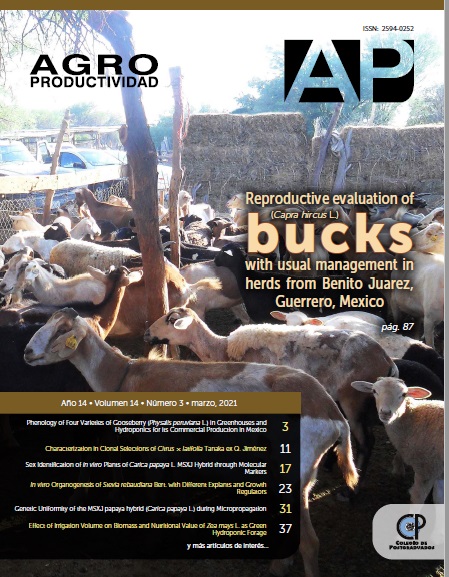Vermicompost and Mycorrhizae Use on Cedrela odorata L. Growth in Nursery Conditions
##plugins.themes.bootstrap3.article.main##
Keywords
substrate, arbuscular mycorrhizal fungi, colonization
Resumen
Objective: To evaluate the effect of mycorrhizal inoculation and the use of
vermicompost on the growth of red cedar (Cedrela odorata L.) seedlings under nursery
conditions.
Materials and Methods: The treatments were with and without a Glomus intraradices
inoculum, combined with different amounts of vermicompost in the growth substrate (0,
10, 20 and 30 %), in a completely randomized block design. The variables evaluated
were plant height (PH), stem diameter (SD), number of leaves (NL), dry weight (DW),
mycorrhizal colonization (MC) and number of spores (NS).
Results: The addition of vermicompost to the growth substrate improved the growth of
C. odorata seedlings, the best treatment being 30% of vermicompost without
mycorrhizae. The percentage of mycorrhizal colonization and number of spores per 100
g of soil decreased when increasing the amount of vermicompost in the substrate.
Study Limitations/Implications: None.
Findings/Conclusions: Vermicompost was the leading promoter of C. odorata plant
growth under nursery conditions.

